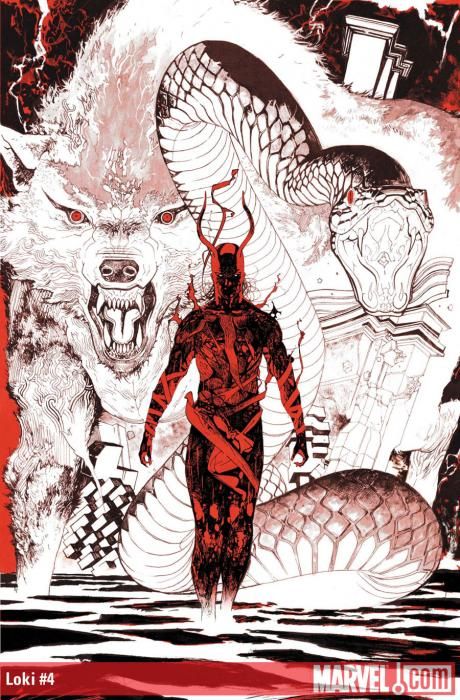The mini-series focusing on the trickster god concludes with an issue that tells you everything you ever need to know about Loki, boiling him down to his essence and tying up the plot that began in the first issue. Roberto Aguirre-Sacasa shows that he gets Loki and weaves that insight through various Norse myths, but never quite makes Loki the hero of the story. He's the protagonist, yet he never comes across as someone we would want to get behind. He doesn't even rise to the level of anti-hero. That, coupled with the art assistance from Al Barrionuevo, who does a somewhat inconsistent job, holds this issue back from being great.
After issues of building up Loki as someone who wants to destroy, wants to be bad, but also never fully embraces it, wanting to be liked as well, he's finally pushed enough to embrace his true nature. The opening story of Loki saving a family from a troll when none of the other Aesir would help ends with him appreciating the gratitude of the family, but liking their fear more. That realization gives him the focus to confront his fellow gods and, basically, ruin their party by filling the role of the drunk who says all of those horrible truths everyone turns a blind eye to (despite not being drunk). It's, oddly, a role that suits Loki perfectly.
Despite being the god of lies and the trickster, Loki is the sort of character that uses truth to accomplish his goals, too. Watching him do the unexpected by telling all of the truths that remain unsaid provides a different sort of insight into the character. It's an approach that's been touched upon before by other writers, but not fully embraced as an essential part of the character. It's not the lies that make Loki Loki, it's the desire to destroy everything around him through whatever means are available. He relishes his role in Ragnorok above all else it seems.
Throughout the series, Sebastian Fiumara has impressed with clean, bold art that also incorporates various stylistic changes when fitting. In this issue, though, he only draws one page early on and, then, the final six. Al Barrionuevo provides the rest of the art. A lot of the time, Barrionuevo does a good impression of Fiumara, using similar line and compositions, it's just not always the case. In the opening pages, there are touches of the style Fiumara uses mixed with simpler, thinner line work that doesn't carry the same weight. Taken alone, it's not art that would stand out in a negative sense, but suffers in comparison to Fiumara. His work on the final pages is some of his best, including a page of a fight between Thor and Loki where he uses a sketchier, more illustrative style, while Jose Villarrubia shifts to a color style that looks more painterly. It's unfortunate that the final issue doesn't look as uniformly great as the first three, but it's still a strong issue artistically.
"Loki" #4 not only wraps up the plots that have been set up, it provides the culmination of Aguirre-Sacasa's portrait of Loki, moving through his petty jealousies and desires to be as liked and loved as his brothers through to his ultimate desire, his true nature, to simply destroy everything around him. Just because he can. It's an interesting portrayal of the character and, hopefully, one that informs how he's written in the future. Along with the "Siege: Loki" one-shot, this is the essential guide to the character.

